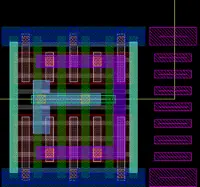It'll be interesting to see how much of the issues can be addressed in software updates. This release seems to be a condensed microcosm of all the issues AMD has had over like the past decade. Something going on with geometry culling (hello NGG on Vega), possibly some light screwup in voltage (if they're telling places to undervolt and adjust power profile or whatever had been an ongoing issue up to RDNA but reminds me of Polaris launch), and then built to clock higher but doesn't hit those clocks out the gate (GCN1).
We keep seeing how difficult modern GPUs are. Both companies put out big hot running expensive stuff this year. Hopefully the chiplet approach can be worked out and that can get us some better gains. I can't help but wonder if they're gonna need to take a different approach, like specialized processors instead of cramming so much (raster, geometry, rt, compute, etc) together I'm still personally underwhelmed with the hybrid ray-tracing and think I'd prefer playing more "game" looking stuff but with just higher raster/geometry performance coupled with lots of throughput to stream in textures/assets.
Granted, I'm barely even in this market any more. I wasn't likely to upgrade this year no matter what (would've taken something like the HD 5000 series where massive performance improvement paired with an Eyefinity like VR thing for me to even consider it). My next GPU buy will be when there's an affordable, quality 4K/120 VR headset that I can get my hands on easily. I'd say maybe next year but it might be another year or two unless the PSVR2 getting some good PC workaround. Which I'm still also disappointed we never got to see if per eye rendering for VR might have been a bridge for mGPU.
The display handling stuff (i.e. high power usage dual monitor, etc) makes me really wish they'd split that stuff off from the GPU as a completely separate chip, possibly coupled with video/image processing. And then include that on mobos and as dedicated cards, with the latter doing maybe input and streaming/handling of multiple feeds.




